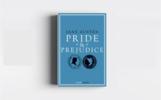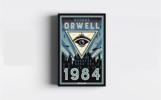"Beloved" stands as a literary masterpiece that
transcends its historical setting to delve into the
profound and haunting legacy of slavery. Published in
1987, the novel weaves a tapestry of trauma, identity,
and the relentless pursuit of freedom. Set against the
backdrop of post-Civil War America, "Beloved" explores
the indelible marks left by slavery on individuals and
communities, rendering it one of the top books of all
time. Morrison's narrative prowess, poetic language, and
unflinching examination of the human spirit elevate
"Beloved" into a work of enduring significance.
"Beloved" unfolds in the aftermath of the Civil War,
a period marked by the abolition of slavery and the
precarious journey toward emancipation for African
Americans. Morrison places her narrative in Cincinnati,
Ohio, where the protagonist, Sethe, resides in a house
haunted by the specter of her past. The historical
context forms the backdrop against which Morrison
explores the complexities of freedom, identity, and the
enduring effects of systemic oppression.
Morrison's decision to set the novel in the postbellum
era adds layers of complexity to the narrative. As
characters grapple with the aftermath of slavery,
readers are confronted with the harsh realities of a
society attempting to reconcile with its past while
individuals navigate the internal landscapes shaped by
trauma and loss.
At the heart of "Beloved" is
Sethe, a woman who embodies the resilience and suffering
of those who have endured the horrors of slavery.
Sethe's character is a testament to Morrison's ability
to create multidimensional protagonists whose
experiences resonate beyond the confines of the novel.
Sethe's journey from enslavement to the tenuous
freedom of post-Civil War America is fraught with pain,
loss, and a determination to carve out a life defined by
agency and self-determination. Her internal struggles
mirror the external challenges faced by African
Americans seeking autonomy in the aftermath of
emancipation.
Morrison's characterization of
Sethe goes beyond the historical dimensions of her
experience. Sethe becomes a symbol of the collective
trauma inflicted by slavery, embodying the resilience
required to confront the past and forge a future. The
complexities of Sethe's character invite readers to
empathize with the struggles of individuals attempting
to reconcile personal history with the societal forces
that seek to erase or distort it.
"Beloved"
explores the theme of motherhood with a visceral and
poignant intensity. Sethe's infamous act of killing her
own child, Beloved, in an attempt to spare her from the
dehumanizing brutality of slavery, becomes a focal point
of the narrative. Morrison's portrayal of Sethe's
desperate act challenges readers to confront the
unthinkable choices forced upon enslaved mothers.
Sethe's act of infanticide is an exploration of the
lengths to which individuals will go to protect their
children from a system that devalues and dehumanizes
them. The haunting specter of Beloved, both as a
revenant and a symbol of maternal sacrifice, becomes a
powerful lens through which Morrison examines the
intergenerational impact of slavery.
Motherhood,
in "Beloved," is both an act of love and a site of
profound trauma. Sethe's sacrifice becomes emblematic of
the broader legacy of slavery, wherein the bonds between
mothers and children are subject to the brutal whims of
a system that denies them agency and humanity. Through
Sethe's story, Morrison confronts readers with the harsh
realities of a past that continues to shape the present.
Morrison introduces a supernatural element into the
narrative with the appearance of Beloved's ghost.
Beloved, the spectral embodiment of Sethe's deceased
daughter, emerges from the waters and takes residence in
Sethe's home. The ghostly presence serves as a
metaphorical manifestation of the unresolved trauma and
collective memory of slavery.
Beloved's spectral
existence disrupts the boundary between the living and
the dead, symbolizing the inescapable specter of slavery
that lingers in the lives of the characters. Morrison
employs the supernatural not as a departure from reality
but as a narrative device to explore the psychological
and emotional dimensions of trauma.
The ambiguity
surrounding Beloved's identity, whether she is a literal
ghost or a manifestation of repressed memories, adds
layers of complexity to the narrative. The ghost becomes
a vessel for the unspoken horrors of slavery, forcing
characters and readers alike to confront the unresolved
traumas that persist beneath the surface.
Morrison's narrative structure in "Beloved" is a
work of literary ingenuity. The novel unfolds through a
non-linear timeline, with past and present interwoven
seamlessly. This narrative technique mirrors the
characters' fragmented sense of time and memory,
offering a nuanced exploration of the ways in which the
past infiltrates and shapes the present.
The use
of shifting perspectives and fragmented storytelling
contributes to the novel's atmospheric and poetic
quality. Morrison's prose, rich with symbolism and
metaphor, invites readers to navigate the labyrinth of
the characters' memories and experiences. The non-linear
structure becomes a thematic exploration of the
fractured nature of identity and memory in the aftermath
of slavery.
Morrison infuses "Beloved" with rich
symbolism, employing names and numbers as vehicles for
deeper thematic exploration. Sethe's naming practices,
the numbering of slaves, and the significance of the
number 124 all contribute to the novel's layered
symbolism.
Names, in "Beloved," become more than
identifiers; they carry the weight of personal histories
and collective legacies. Sethe's naming choices for her
children reflect her attempts to assert agency in a
system that sought to dehumanize enslaved individuals.
The act of naming becomes an act of resistance, a means
of affirming humanity in the face of degrading
circumstances.
The recurring motif of numbers,
particularly the haunting presence of the number 124,
adds to the novel's symbolic depth. The house at 124
Bluestone Road becomes a site of memory and trauma, a
physical space haunted by the ghosts of the past.
Morrison's use of numbers underscores the pervasive
impact of slavery on the lives of individuals and the
indelible marks left on the landscape of post-Civil War
America.
"Beloved" explores the
theme of communal healing and the transformative power
of shared stories. The characters in the novel,
particularly the women of the community, come together
to confront the traumas of slavery and forge a
collective identity that transcends individual
suffering.
The act of communal storytelling
becomes a form of resistance and catharsis. Characters
share their experiences, recounting the horrors of
slavery, and by doing so, they reclaim their voices and
assert their humanity. Morrison emphasizes the
importance of communal bonds in navigating the legacy of
trauma, portraying a community that strives to heal
together.
Through storytelling, Morrison suggests
that confronting the past and bearing witness to each
other's pain are integral steps toward healing. The
communal sharing of stories becomes a form of resistance
against the silencing effects of slavery, empowering
individuals to reclaim their narratives and reshape the
collective understanding of history.
Toni Morrison's "Beloved" stands as a testament to the enduring power of literature to illuminate the darkest corners of history and the human psyche. Morrison's exploration of slavery's legacy, through the lens of characters like Sethe and the spectral presence of Beloved, transcends the confines of time and setting.






